7 Tips for Better Brainstorming Sessions
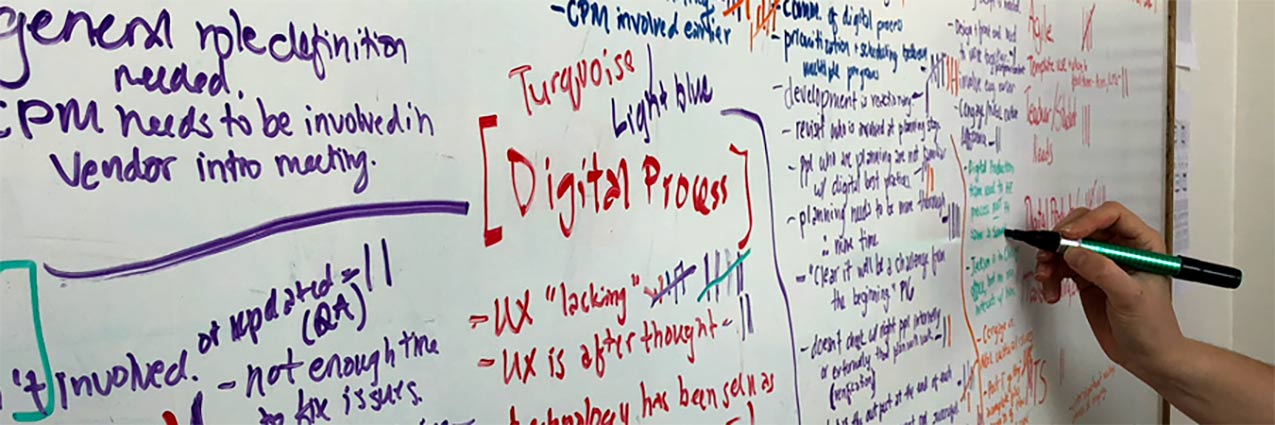
Here are seven ways to get the most from your collaborative brainstorming sessions.
Creative brainstorming, mind mapping, design thinking, ideation—the process of generating creative ideas to solve a challenging problem can take many forms. A clear process for creative collaboration can help you transform seemingly unrelated ideas into something new and innovative. At Mightybytes, we refine our discovery approach regularly to improve collaboration and ensure we’re solving the right problem. In this post, we discuss how to facilitate collaborative brainstorming sessions in the service of more successful projects.
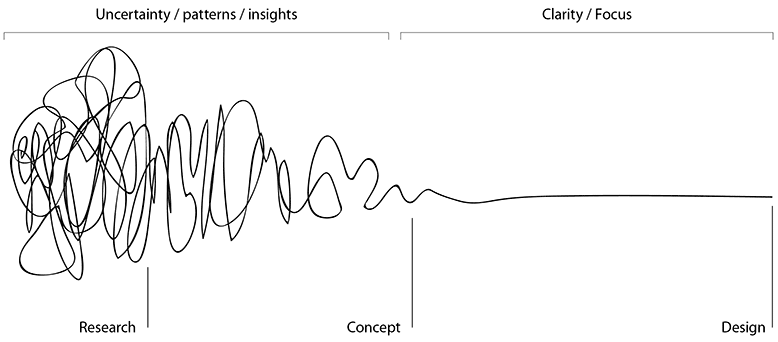
Structuring Brainstorming Sessions
If you clearly understand the problem you’re trying to solve, creative brainstorming sessions can help you make progress toward potential solutions:
- First, they give teams a chance to get comfortable with one another and share ideas.
- Second, they capture “blue sky” ideas and identify potential connections between those ideas.
- Third, they help teams refine those ideas to visualize solutions.
That said, good brainstorming sessions should also have structure and clear goals. Uncertainty exists at the outset of any project and it’s your job to transform those jumbled ideas into a workable solution. After all, someone has to make sense of all those sticky notes and marker lines.
The process of discovery is ongoing for most projects. Kicking off your project with a brainstorming session, design thinking exercise, or a discovery workshop helps stakeholders better understand project uncertainty and aligns everyone toward a common solution.
With that in mind, here are seven brainstorming session pointers to consider:
1. Understand Your Problem
Do your research. Arm yourself and your team with the data necessary to speak with authority on the problem you hope to solve. It is human nature to fall in love with our solutions. However, better solutions arise from teams that fall in love with their problems. To do this, everyone needs to agree on what that problem actually is.
Research anything that can help you better understand the problem space: who has this problem and what do they do about it? Do competing solutions already exist? How successful are they?
If you and your team aren’t clear on which problem you hope to solve, the chance of your solution going off the rails—or worse, not resonating with target users or customers—increases. Try this:
- At the workshop’s outset, ask everyone to write down what problem you hope to solve.
- Have everyone read their answers aloud to the group.
- Discuss similarities between answers. How do they differ?
- If there is not a clear group consensus after the discussion, you might need to do some problem-framing. You can use our free problem-framing template to workshop this.
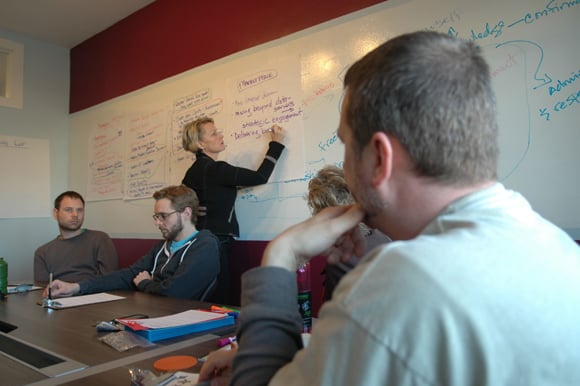
2. Free the Wild Mind
Author and writing instructor Nathalie Goldberg cautions us to not let our ‘internal editor’ take over the writing process. This applies to creative brainstorming too. Harnessing creative ideas is a critical part of successfully executing them. However, your team should generate ideas freely without feeling stifled by a need to fine-tune them first.
Check your analytical thinking at the door. This is not the time for detailed outlines or questioning priorities. That comes later. Instead, foster open dialogues and the free exchange of ideas. Be sure to create a collaborative culture where everyone feels comfortable sharing any ideas, no matter how ambitious or off-the-wall.
3. Three Rooms of Creativity
Scott Belsky talks about the idea of using three distinct rooms for the creative process in his book Making Ideas Happen:
- Unrestrained sky is the limit brainstorming occurs in the first room (which we are discussing here).
- The second room supports the organized chronology of some ideas from room one.
- Critical reviews of remaining ideas take place in the third room.
You may not have three extra rooms in your home or office that can be used exclusively for these purposes. However, the idea is that each space exists separately from the others. Goals are clearly defined for each, which helps drive the execution of creative ideas. If you can’t spare the space, consider finding three different environments in which to explore these three creative goals. Coffee shops, co-working spaces, or your dining room table can all serve suitable purposes here. If that won’t work, at the very least, try dedicating a separate whiteboard for each purpose.
4. Define a Common Language
It is important to include people from a variety of backgrounds in any workshop. Diverse perspectives yield more effective solutions. However, technical terms, industry-specific jargon, or internal buzzwords might intimidate clients or other team members and make them less apt to share ideas.
In other words, don’t let industry verbiage gum up the works. This applies equally for technical specifications that may be important later on but will only cloud the generation of good ideas at this early stage.
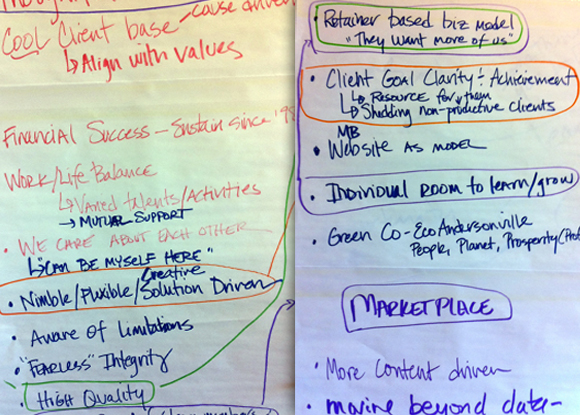
5. Start with Questions
Good brainstorming sessions always start with good questions. At Mightybytes, we use discovery workshops to better understand our clients’ goals and their users’ needs. The exercises in these workshops cover key project requirements, from user personas and prioritizing product features to content strategy and information architecture. Each exercise begins with an inciting question meant to begin a process or discussion. Insights learned from these exercises help us execute a more successful project.
‘How Might We …’ is a simple method we use for framing questions in an open-ended way to help people generate ideas. In other words, “How might we help users answer their questions more quickly?” or “How might we increase conversions on this landing page?”
Similarly, you might use a SOAR Analysis session to ask your group what its collective Strengths, Opportunities, Aspirations, and Results might be. It really depends on what you’re trying to get out of the session. Above all, make sure to foster a curious and optimistic environment in your workshops. Encourage participants to ask questions that challenge assumptions or scrutinize the implications of any potential decision.
6. Yes, and…
There is an improv technique called ‘Yes, and’ that is meant to push actors further into an idea or topic during a performance. Basically, one person throws out an idea or topic, giving the other performer an opportunity to accept it and take the idea in a new direction.
- Performer one: “We should go see a movie tonight.”
- Performer two: “Yes, and that will give me an opportunity to wear my big new hat.”
When applied to a workshop or brainstorming session, the same technique allows diverse groups to build on each other’s ideas rather than tear them down.
- Participant one: “We should add a rotating image carousel to our homepage.”
- Participant two: “Yes, and we should test it to be sure users actually click on it.”
Try using this ‘Yes, and‘ during your brainstorming sessions to make connections between two seemingly disparate ideas and to foster a supportive environment for your creative team.
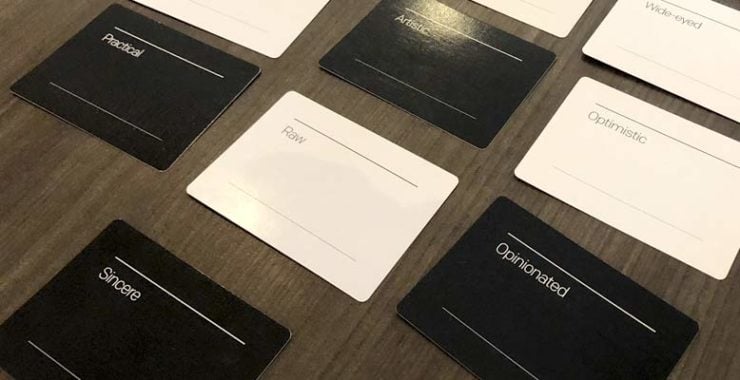
7. Continue with Keywords
Keywords play a critical role in so many marketing efforts these days that you might consider making them a part of your brainstorming sessions as well. For a website or SEO project, you might undergo a full keyword strategy process. However, for a brainstorming session, you might define the words that define your organization or project with a simple exercise.
The Brand Deck
Most of our clients come to us with existing brand standards. However, some don’t. This can undermine their ability to clearly define their message or tell a compelling story. In this case, we use the Brand Deck to run a keyword exercise. The exercise helps workshop participants build consensus on what they or their project does or doesn’t stand for. In its simplest form:
- The facilitator turns over a card, which contains a keyword, from the top of the deck.
- Your group has to decide if that card reflects who they are, if it doesn’t, if they’re torn, or if the keyword does not apply. (This can be applied to the project they’re working on as well.)
- The facilitator turns over the next card. Repeat.
Over time, the group should start to see keyword patterns emerge. Next, the group clusters similar terms and ditches those that they collectively decide are irrelevant. By the end, a core group of keywords that everyone agrees on should emerge.
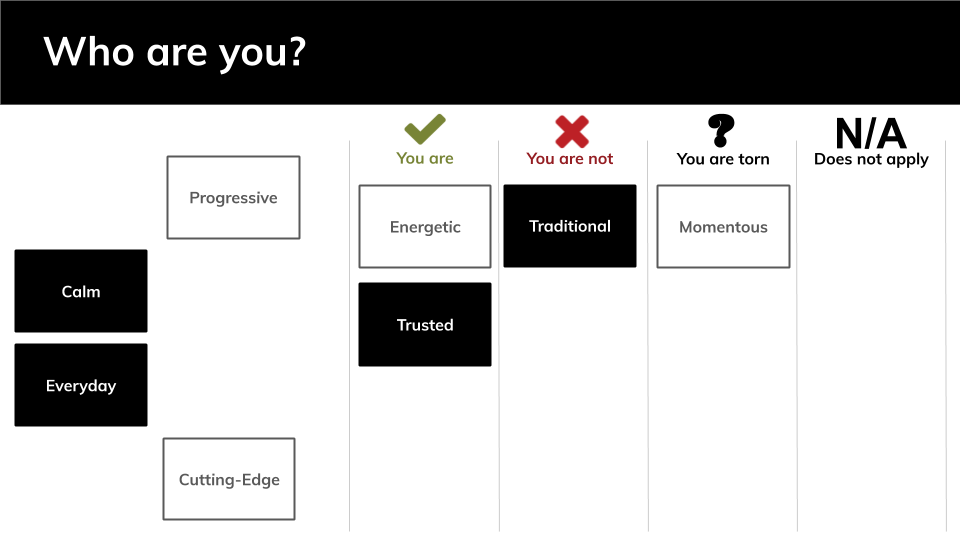
Similarly, we have run this exercise using a whiteboard, sticky notes, or even Google Slides. With a whiteboard, you can draw lines from word-to-word, making connections between ideas that wouldn’t necessarily be apparent were you using a software tool.
Again, this presumes you have a clearly defined problem. If so, this exercise can give everyone clarity and a common language with which to describe their organization or project.
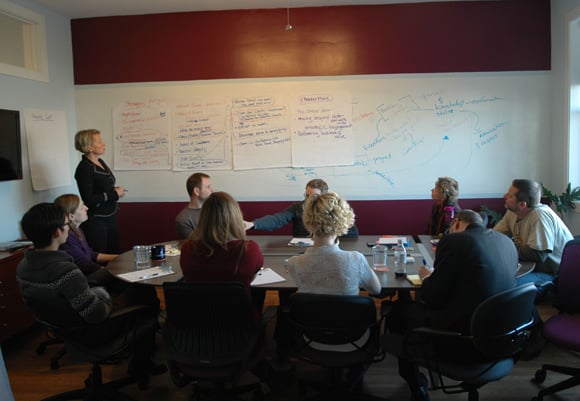
Next Steps: Make Your Brainstorming Sessions Actionable
If you have implemented even some the techniques mentioned above you should have whiteboards and notepads chock full of good ideas, great content, ample keywords, and lots of squiggly arrows and lines connecting your ideas. After this, the hard part begins. It’s time to distill all these ideas into those that really matter and are worth developing.
To sum up, try some or all of the ideas above during your next brainstorming session to improve collaboration, build consensus, and move toward solutions more quickly and effectively. Happy brainstorming!



